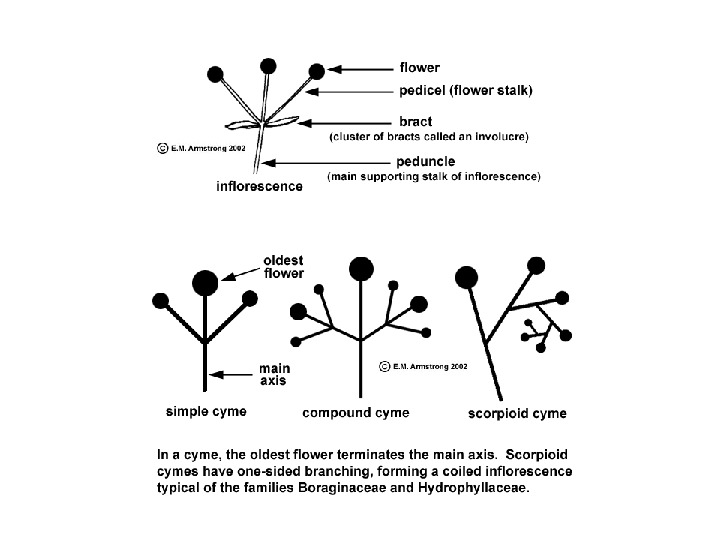

Capsule opening by 2 terminal valves seeds ovoid, ellipsoid, globose, rarely sub-reniform, 0.5–1 mm long, straw-coloured, yellow-, olive-, reddish- or chocolate-brown. A cyme is a flat-topped inflorescence in which the central flowers open first, followed by the peripheral flowers, as in the onion (genus Allium). Inflorescence a dense, axillary cyme, to 2 cm long. Below you will find example usage of this term as found in modern and/or classical literature: 1. fusiform, 1-locular, sessile or with a short gynophore style indistinct or absent stigmas 2. axillary, few-flowered, very shortly pedunculate calyx stellate pubescent, 5- dentate, ca.

Calyx (4–)5-lobed, with very short to well-developed tube, sometimes split to base on one side corolla funnel-shaped, cylindrical, rotate or campanulate, (4–)5-lobed, shallowly or deeply lobed, white, cream, pale yellow, pink to violet, often streaked by darker veins, not plicate between lobes corolla-lobe with 1 nectary at base, 5–9-nerved corolla-tube with or without fimbriate appendages fimbriate appendages vacularised or not, scattered, united in a ring or arranged in a row at base of corolla-lobe stamens inserted at or below middle of corolla-tube, filaments filiform, occasionally with hairs anthers versatile, scarcely twisted after dehiscence ovary c. Inflorescence a terminal or axillary cyme or flowers solitary. Leaves opposite or whorled, entire, often crowded at base where petiolate. Annual, biennial or perennial (often monocarpic), more or less glabrous herbs.


 0 kommentar(er)
0 kommentar(er)
